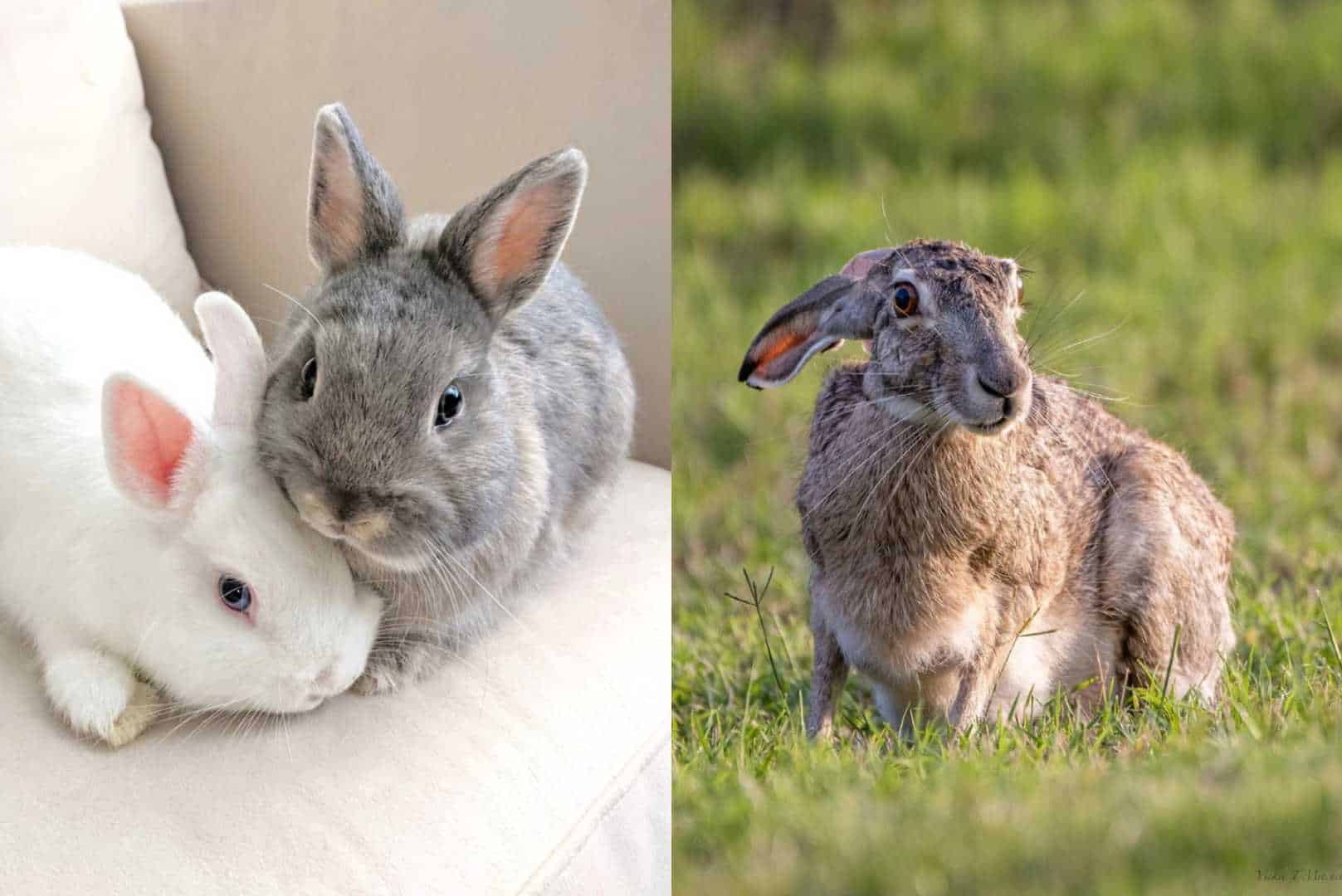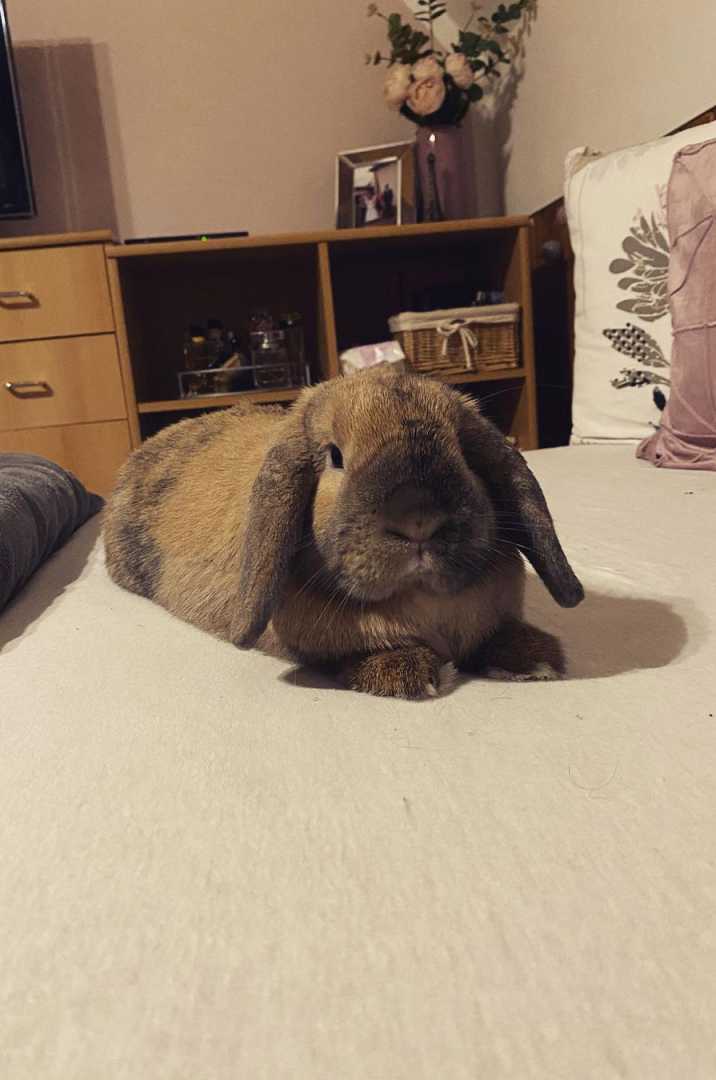Bugs, Easter Bunny, and Lola Bunny are names that are very familiar to most children and adults, preferring to the cute furry animals’ others would argue should be referred to as rabbits. Which among these terms should we continue teaching the children? Bunny vs. rabbit, is either one more correct? Are there differences?
A Comparison between Bunny and Rabbit
People are often confused about the differences between a bunny and a rabbit. Before we dig deeper into their difference, let us define what a bunny and a rabbit are.
What is a rabbit?
Rabbits are also mammals characterized by their distinctively long and usually erect ears. They also have two large front teeth; some have short tails, whiskers, powerful hind legs, and tiny bodies.
Usually, some rabbits will grow similar to the size of a cat, but some breeds can grow up to the size of a child that is considered giants that have a height of up to 20 inches.
Rabbits can be found almost everywhere, but wild rabbits are often seen in the woods, meadows, grasslands, deserts, and wetlands and then become farm animals. In the modern-day, rabbits are among the most domesticated animals and are often regarded as perfect pets for children.
In general, rabbits live for 5 to 8 years, depending on the environment and breed. Some can live for as long as 12 years, depending on the care and nutrition. [How Long Do Rabbits Live?]
What is a bunny?
Rabbits and bunnies are technically the same animals. There is no difference in breed or species, just the term of endearment most people prefer. Originally, it was a term for a young girl, but now, it is more loosely used to call one of the most popular house pets.
Colloquially, ‘rabbit’ would be used for a full-grown form of the mammal, and ‘bunny’ for a young rabbit because when it comes to perception, the name is attached to a small or baby domestic rabbit.
A young rabbit or bunny is typically below the age of 12 months. It is highly dependent on its mother as it feeds the baby once a day with milk. When the bunny reaches around 10-12 days, it opens its eyes and becomes more energetic. A domesticated bunny is likely to be brought home from a pet store at an age between 2-6 months.
Are bunnies rabbits?
Below are the two questions that may be bothering us about bunnies and rabbits. We will find out how did people start using the term bunny. Moreover, when should we use the term bunny or rabbit.
How did people start using ‘bunny’?
The ultimate etymology of the word ‘bunny’ is unknown, but few theories could make sense given the usage of the word in the current times.
One theory is that people started using bunnies because of the rabbit’s small, bun-shaped tail.
Another theory notes that it is rooted in the original 18th-century common word for rabbits, “coney,” pronounced “cunny.” Eventually, some people stopped using the old term, suggesting a different and more negative meaning. The name then evolved to the like-sounding word ‘bunny’.
When to use bunny or rabbit
Even though it has been established that there is no difference between a rabbit and a bunny, aside from the perceived developmental stage, there are still instances requiring a more appropriate use of the words.
Given that the name for a young rabbit is “kitten,” which is the same for newborn cats, it could be confusing for children to use the term for different animals. The more familiar use of ‘bunny’ is a better alternative for kids to call baby rabbits. It also has a more endearing sound to it.
On the other hand, for scientific issues, formal descriptions, and taxonomical writings, the use of rabbits is more proper. For example, the word rabbit should be used when listing breeds, such as American Rabbit, Checkered Giant Rabbit, Angora Rabbit, and the Dutch Rabbit, among others.
Bunny and Rabbit Fun Facts
Below are a few fun facts about bunnies and rabbits when it comes to their food and, at the same time, how to spot one.
Feeding: Bunny vs. Rabbit
It is recommended that bunnies feed on their mother’s milk or on formula during the baby stage until it reaches 12 months. Young rabbit pellets are also advised as it also meets the nutritional needs during the growing weeks.
Adult rabbits’ natural diet consists of plant material such as plants, grasses, hay, weeds, bark from bushes and trees. Cabbage, celery, broccoli, and other fresh green vegetables are necessary for their daily diet. Rabbits must be provided approximately 2 cups a day.
Spotting a Bunny vs. Rabbit
A bunny has no fur when born, and its eyes and ears are still closed. After 12 days, it develops a soft and fluffy coat. At around 5 months, the coat will moult or shed and be replaced by a transitional coat. After this, the adult rabbit’s coat will develop with a smooth texture. Rabbits regularly moult twice a year during the Spring and Autumn.
What is my bunny saying?
As with humans, a rabbit’s stage of development dramatically affects its behavior. You might also notice a change during adolescence, so here is an overview of how personality looks during the early months.
Energetic & Playful
A bunny has an adorable, lively, and playful energy that can be observed from 4 or 5 weeks of age. They are usually happy, silly, and looking forward to socializing during this ‘cute’ stage. You can also begin liter training for them at this stage.
Sexual Maturity
The noticeable behavioral change for a bunny is usually at this stage (3-6 months) when the transition from nice to naughty. Do you notice grunt noises, angry reactions, territoriality, spraying urine, or being aggressive? It must be going through sexual maturity. These noises are due to their territoriality or caused by stress. Take this as a sign to back off to avoid getting bitten or scratched and to consider getting it neutered.
What is my rabbit saying?
Often, rabbits are perceived to be the quietest and calmest. So to better understand what they are saying, observe how they use their body to communicate.
Rabbit Ears
The ears of rabbits are very expressive and can give you a range of signals. Pinned flat-back rabbit ears with a tensed body means they are nervous, upset, or scared. Pinned flat back with a relaxed body indicates a relaxed mood. When their ears are straight up, it means that they are in alert mode.
Rabbit Binky
One of the most telling signs of rabbit behavior is a ‘binky’. It is when a rabbit does a hop in the air, twists its body, and kicks its feet. Rabbits can do a binky while running or even while standing still. This spontaneous action is an apparent sign of playfulness and joy, so there is no need to be worried.
Chinning
Like many other animals, rabbits also have scent glands under their chin. This is why you would sometimes find your bunny rubbing its chins on various items to mark it as a territory using their scent.
There are many more rabbit body languages to take note of, and as an additional bunny guide, you can learn more by watching this video:
2 Care Guide Tips For Your Baby Bunny
Getting a Bunny
Caring for your bunny starts the moment you transport it from the shelter of the store to your home. Make sure to put it in a secure and safe transport container without too much exposure to other animals.
Bunny-proofing your Home
Important papers and books should be kept out of reach and visible wires that the bunnies can chew. You can cover these with old magazines and cardboard or hay nearby to distract them away. Ensure rodent poison and toxic chemicals are also out of their reach.
4 Care Guide Tips For a Full-Grown Rabbit
Proper care is essential for your rabbit’s health and yours too! Here are some tips on proper handling, hygiene, and routine healthcare from their baby to full-grown stages.
Handling
When picking up a rabbit, never use the ears or scruff. Instead, fully support the weight from beneath its rump or chest.
Personal Hygiene
The hands of both adults and children should be thoroughly washed with soap and water or an alcohol-based sanitizer after handling a rabbit. This is also advisable after cleaning a rabbit’s cage, bedding, stool, or urine.
Infection Control
Ensure to always check your rabbit’s enclosure for stool and urine build-up. Daily scooping of stool is an excellent practice to control and completely avoid infection. A dry area to sleep is also essential to take note of.
Rabbit Hygiene
The need for baths is generally rare for rabbits. Staying clean if needed can be done using a damp washcloth and mild soap. Their fur may also be brushed a few times a week to avoid tangling and ingesting.
Watch this video to get a glimpse of what a day in my life as a rabbit owner looks like:
Rabbit and Hare Comparison
Usually used interchangeably the same way bunny vs. rabbit is, rabbit vs. hare is a different case in terms of comparison. They look similar at first glance, but rabbits and hares are not of the same species.
| Hare | Rabbit | |
| Features | Larger and longer ears | Shorter ears than hares |
| Longer legs | Shorter but strong legs; powerful hind legs | |
| Size | Larger than rabbits | Smaller than hares |
| At birth | Furred with open eyes | Closed eyes and without fur |
| Developed and not totally developed on mother | Completely dependent on mother | |
| Habitat | Aboveground; open areas and prairies | Burrows, shrubs; domesticated homes |
| Diet | Herbivore | Herbivore |
| Behavior | Less social than rabbits | Very sociable animals; live in groups |
| Run aways and outruns predators | Prefers to hide from predators using dug burrows |
Summary
Bunny vs rabbit, both words are correct to refer to the same mammal, but just referring to the animal’s different developmental stages. While it is commonly used interchangeably in conversations, the term ‘rabbit’ is to be used in scientific and formal writings as required for taxonomical precision. But for endearment and children, continue using ‘bunny’ by all means.



